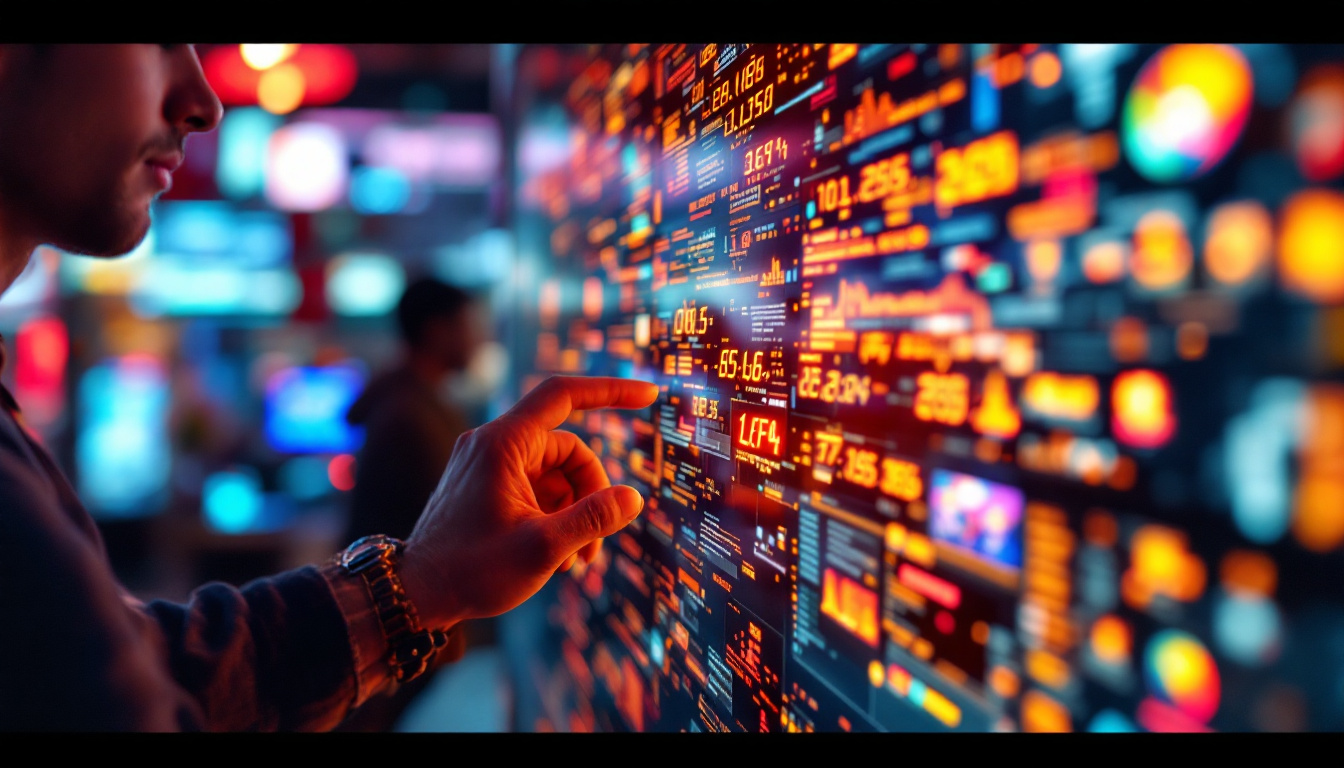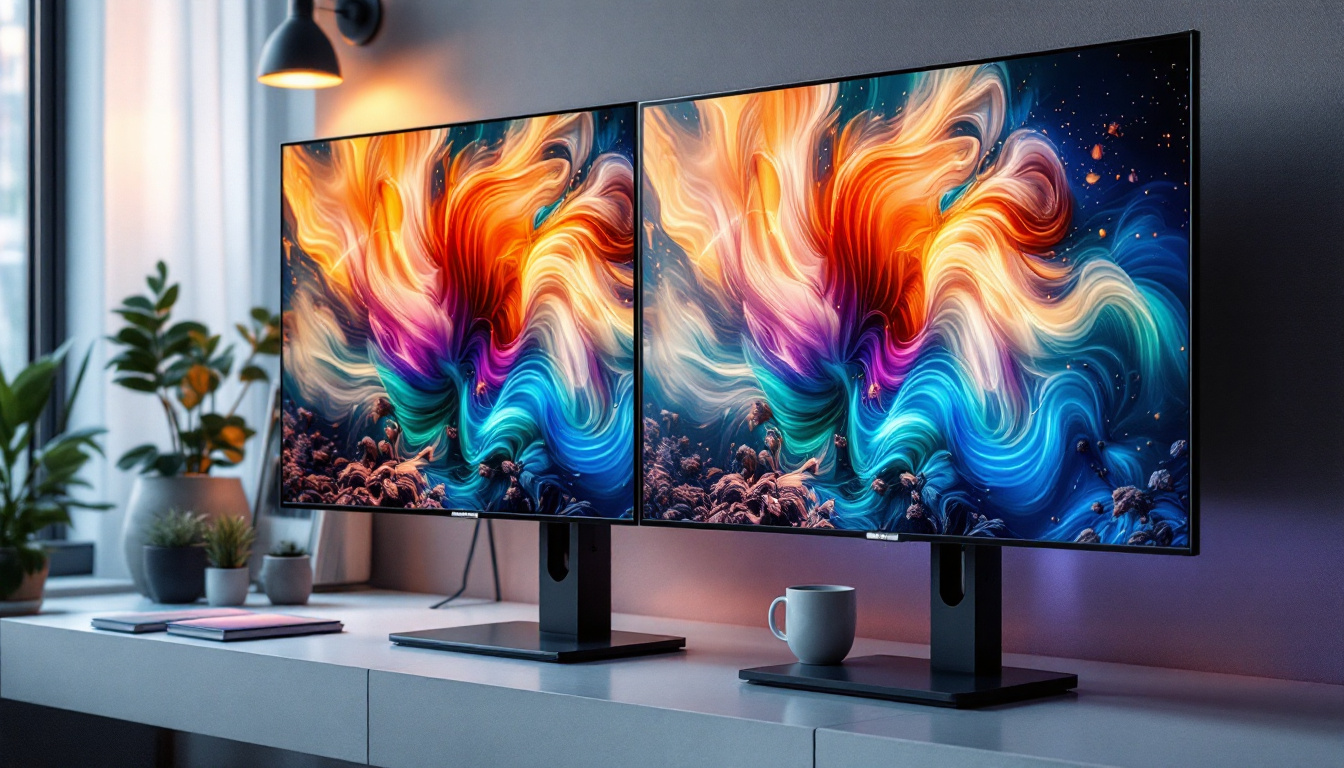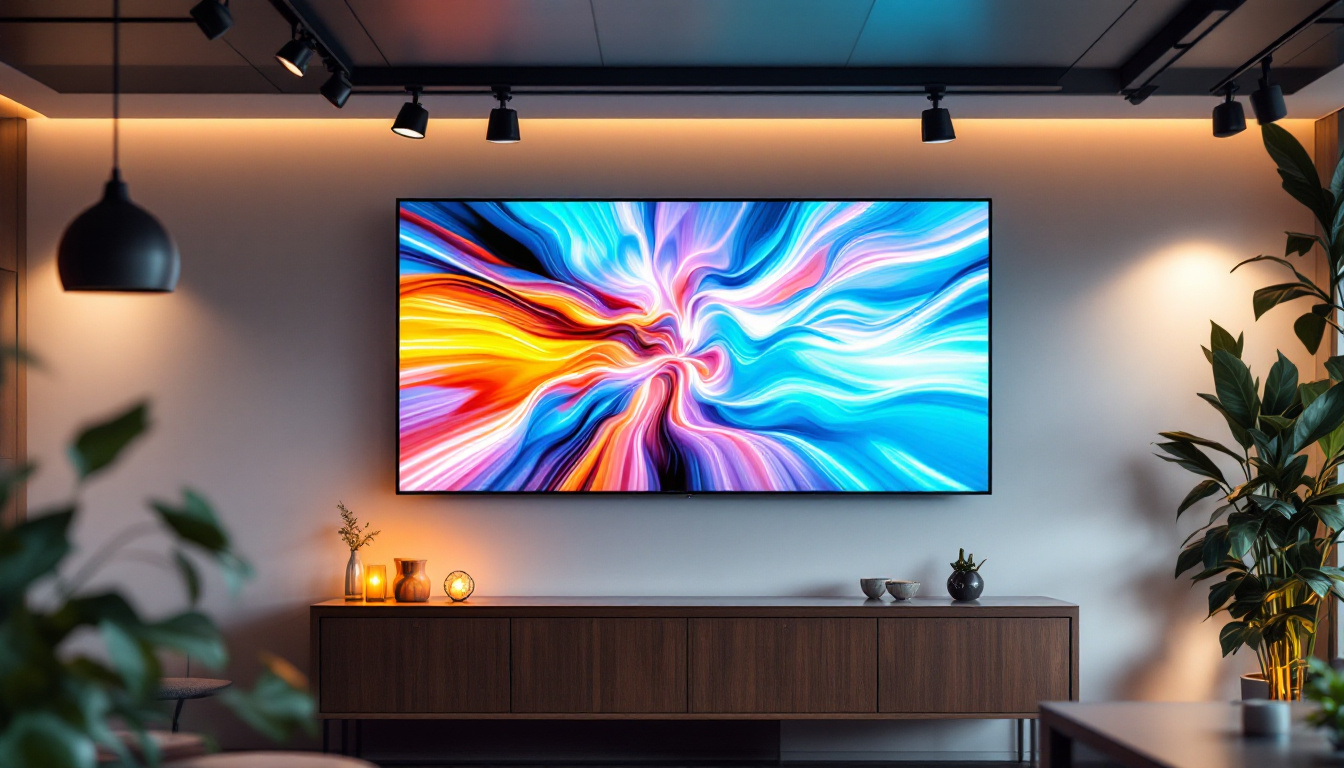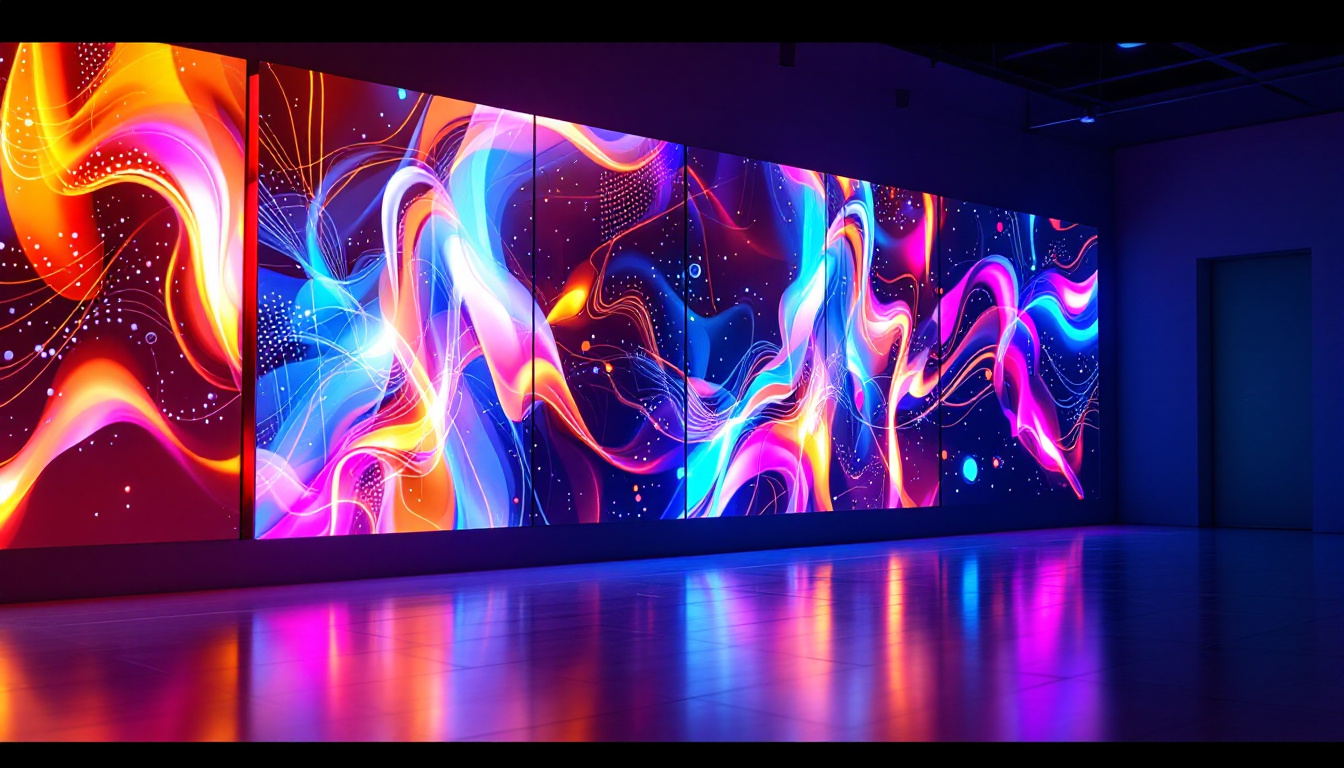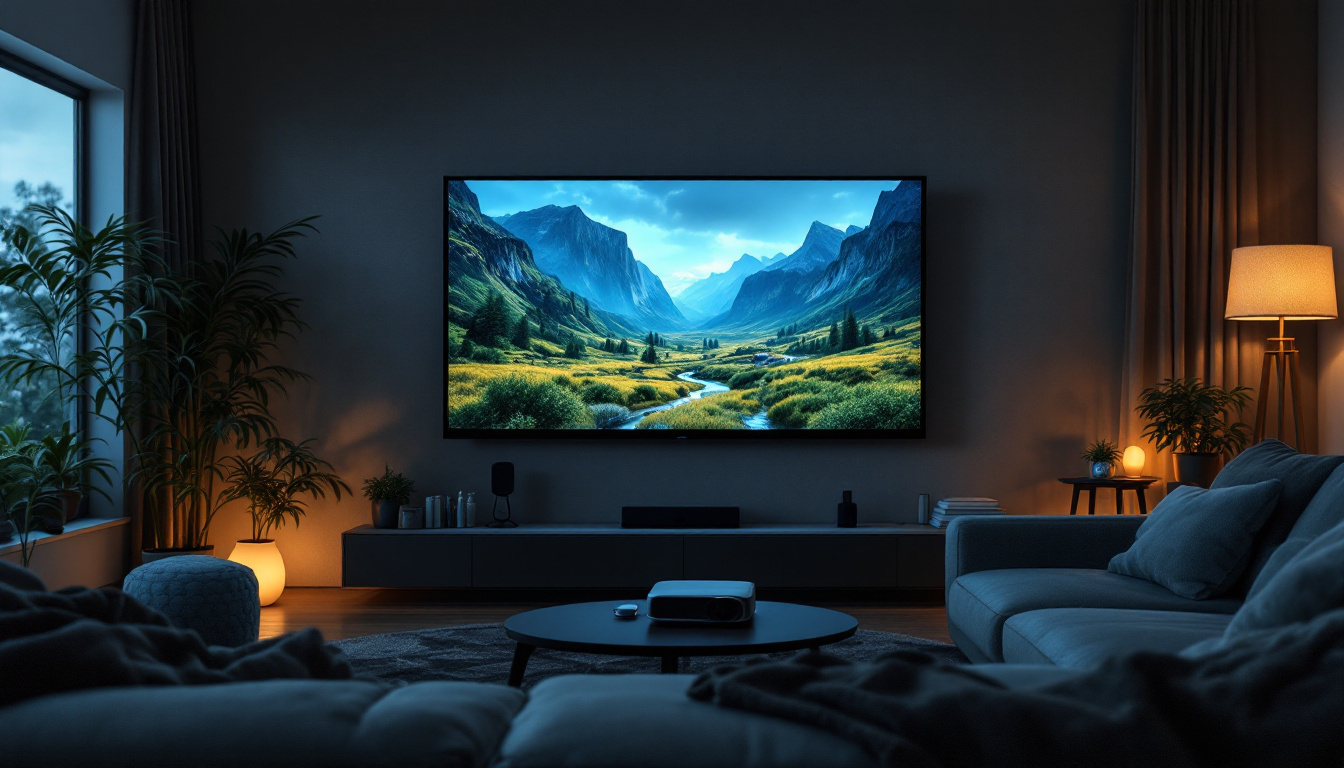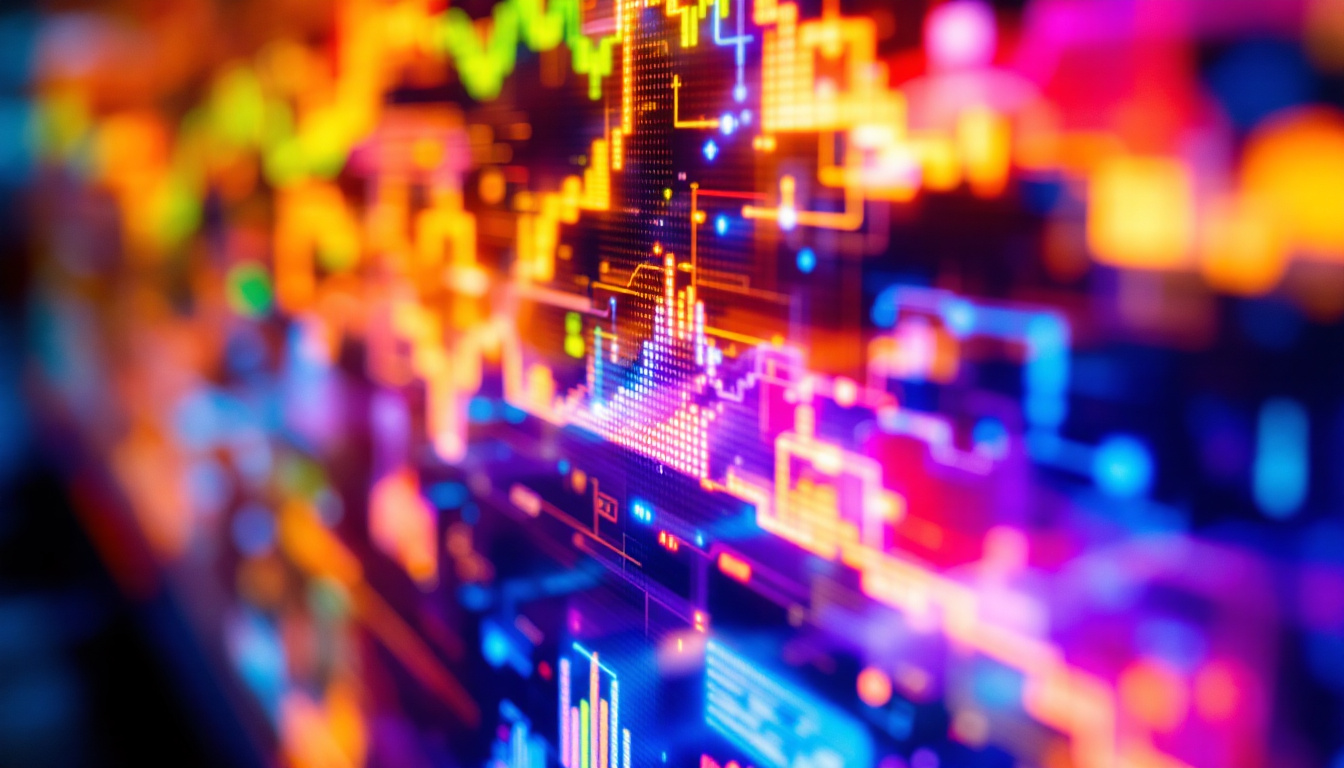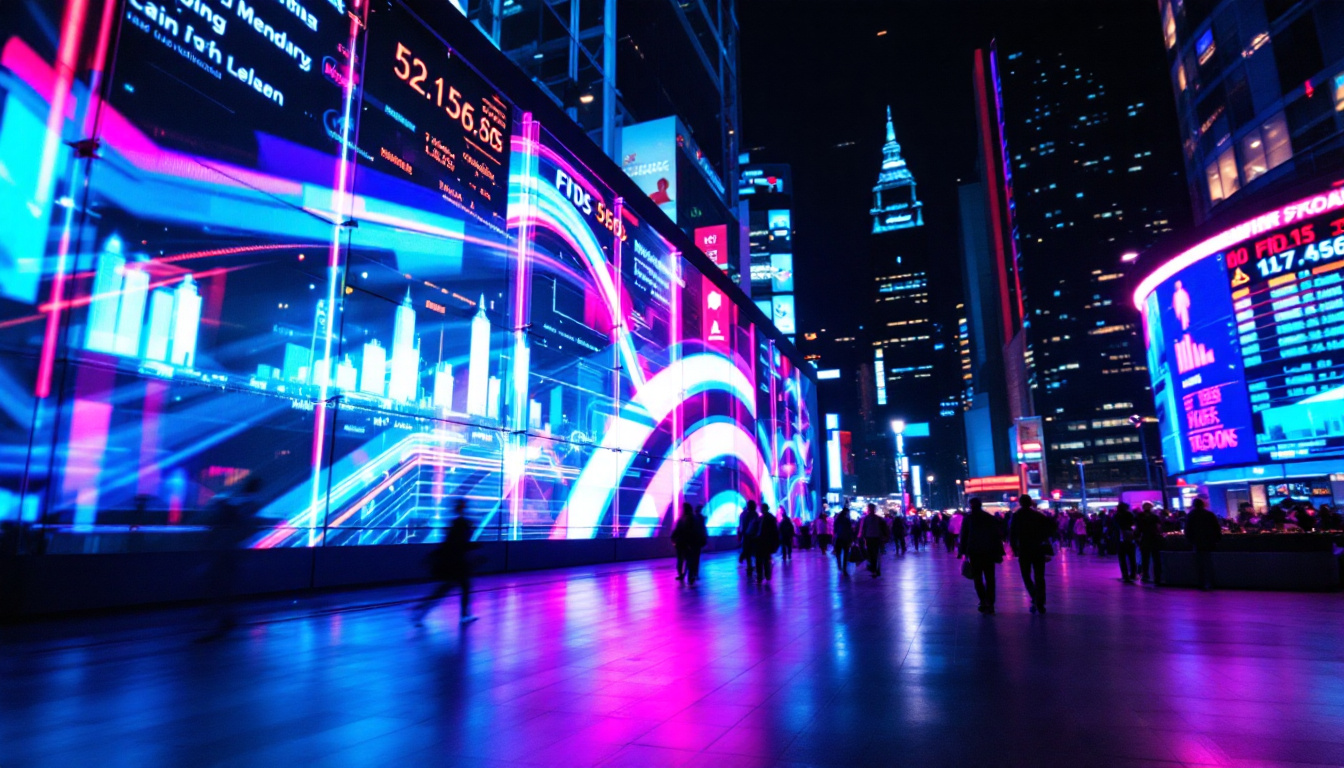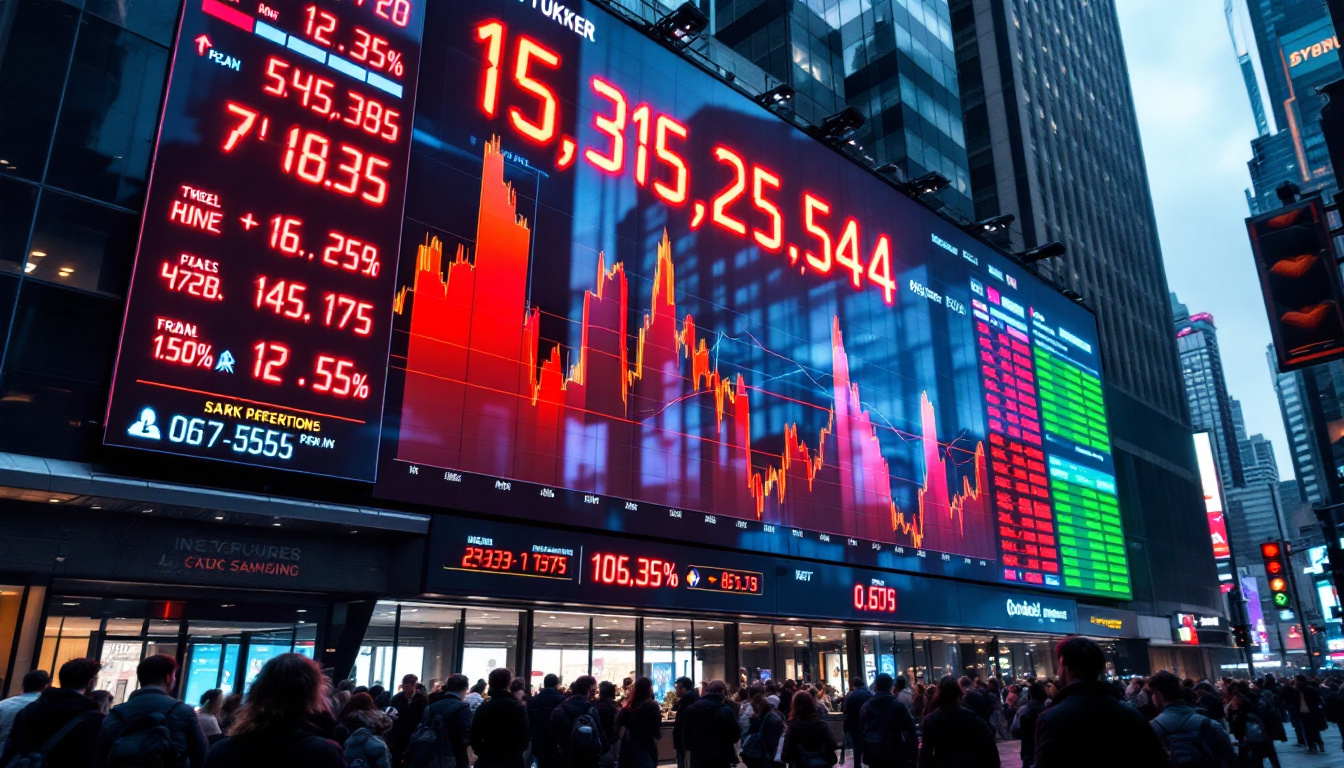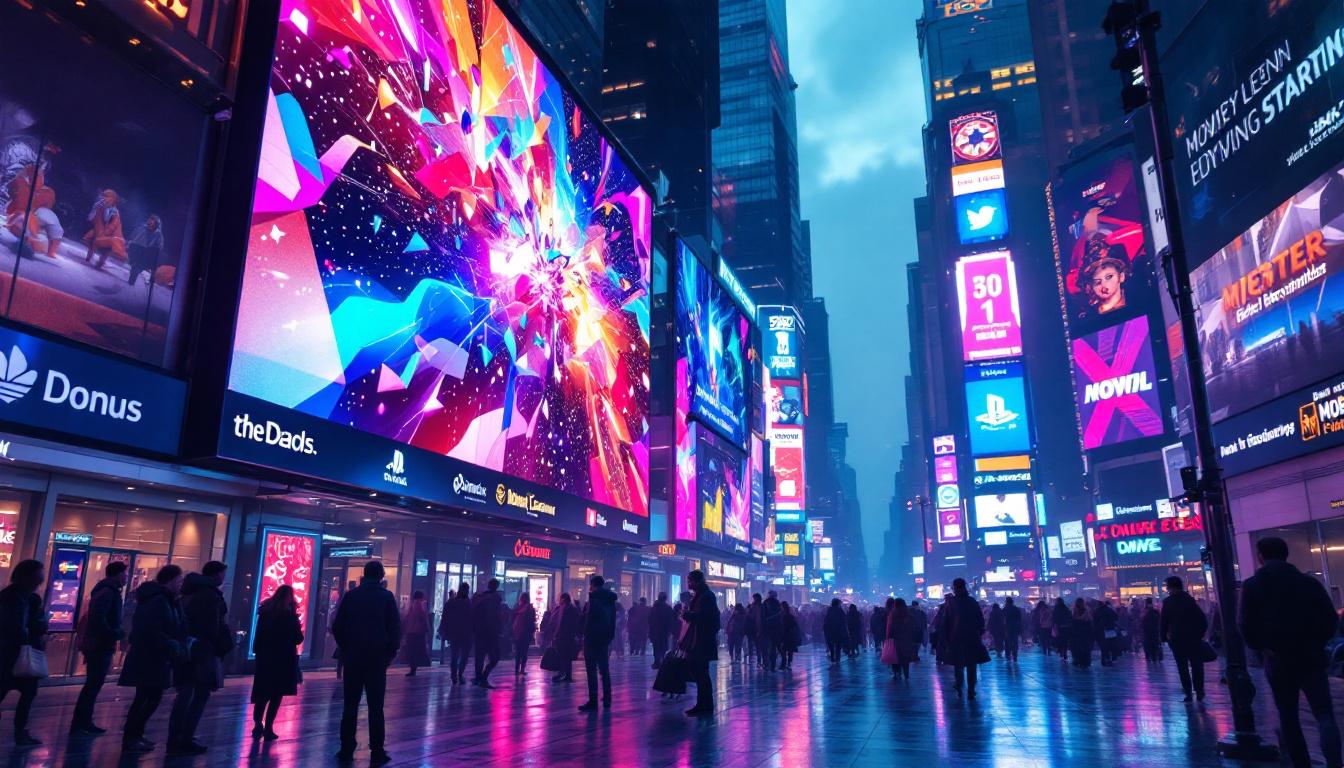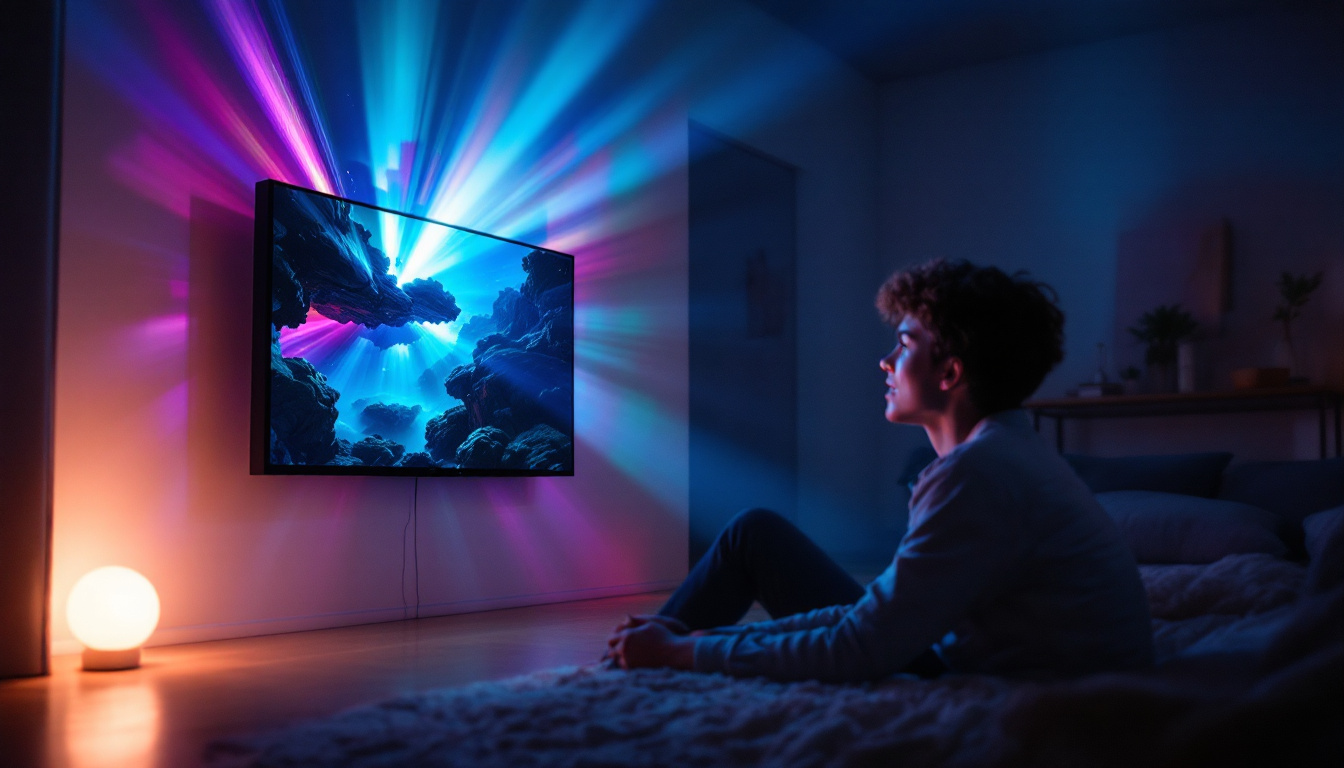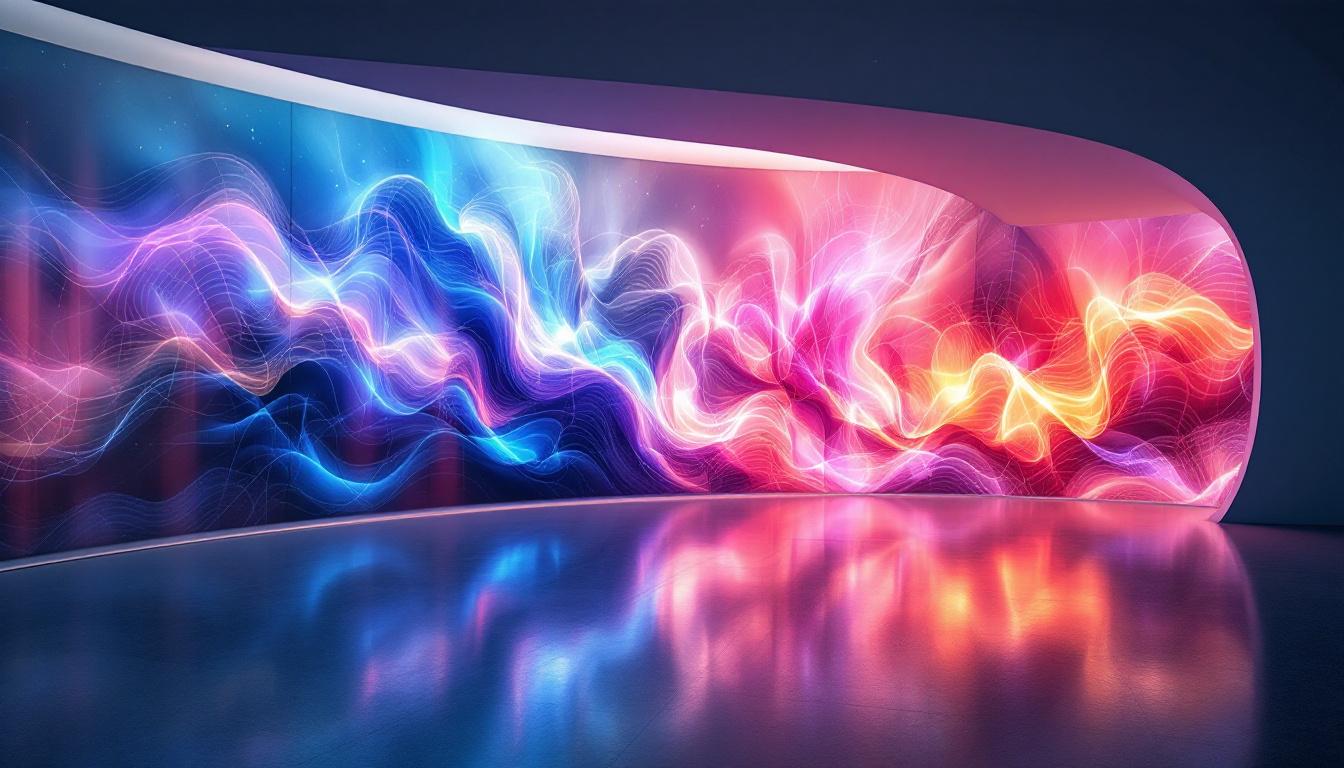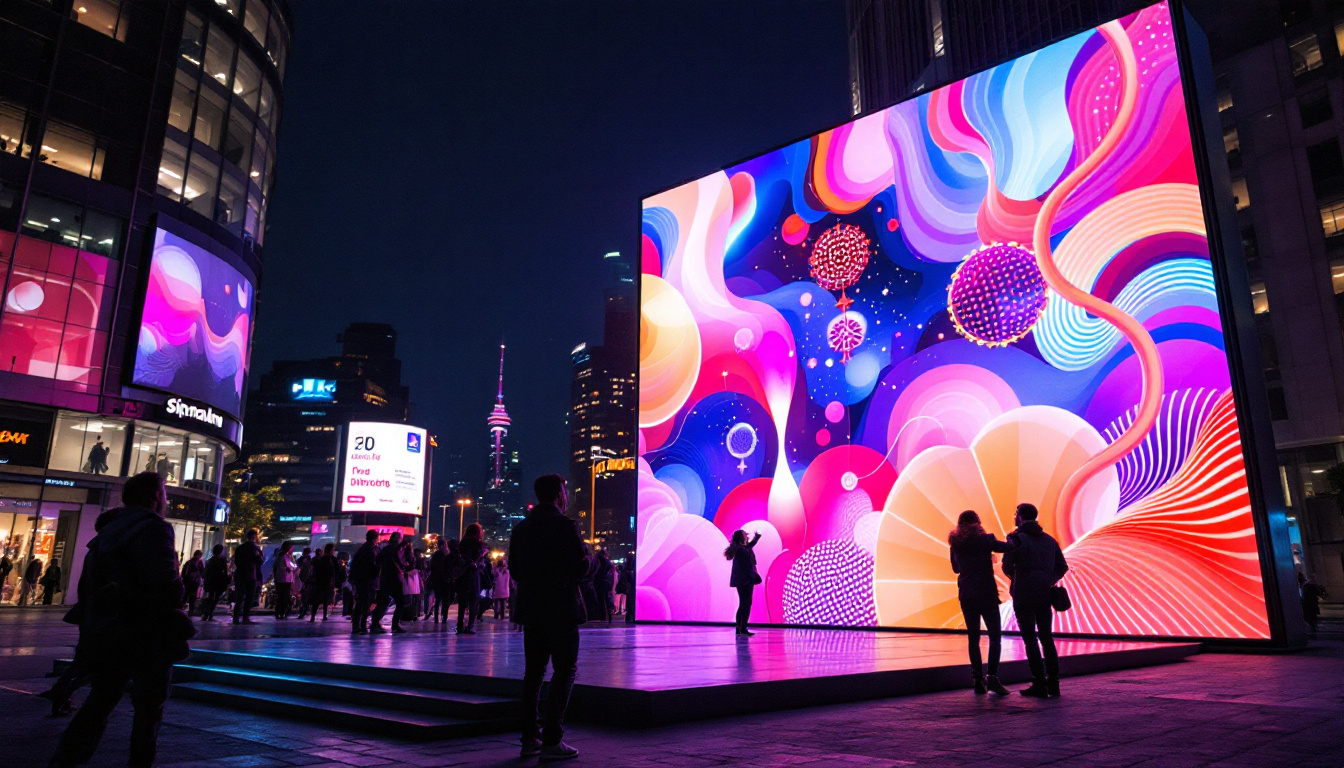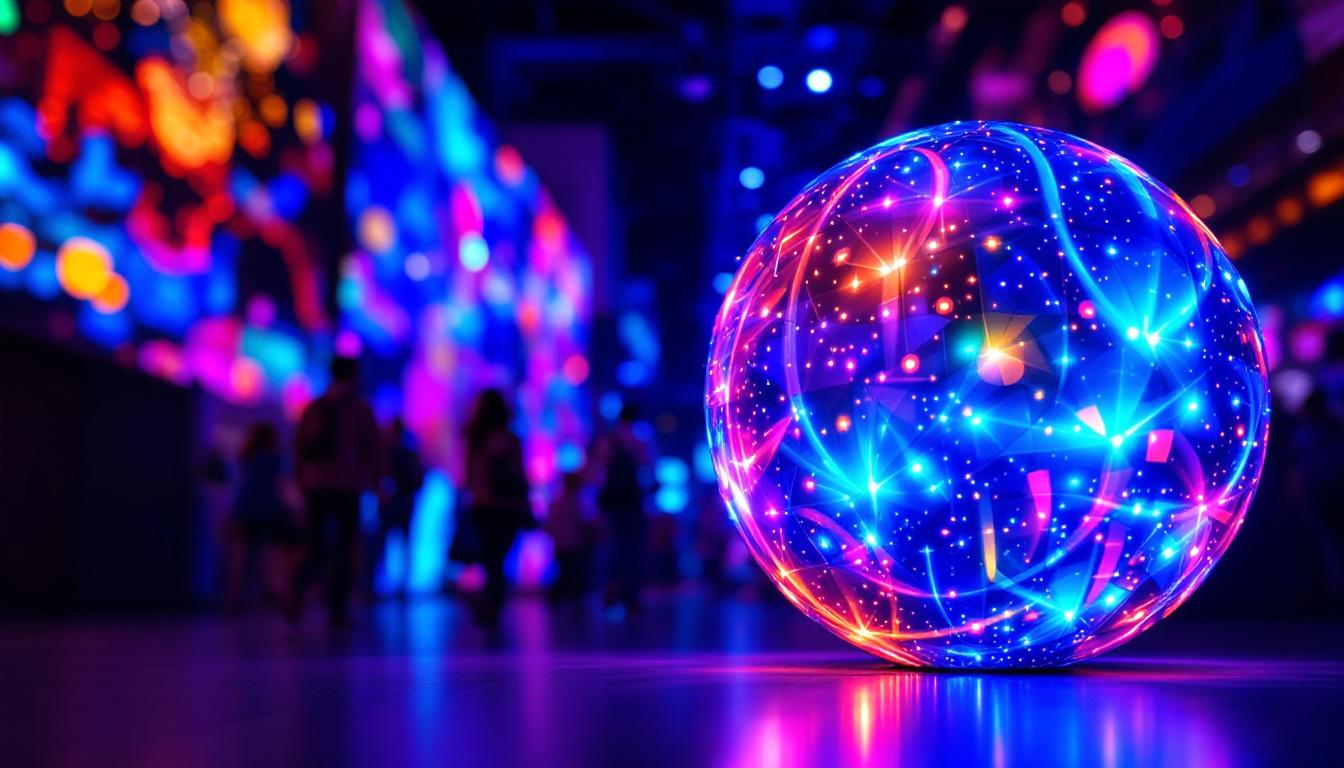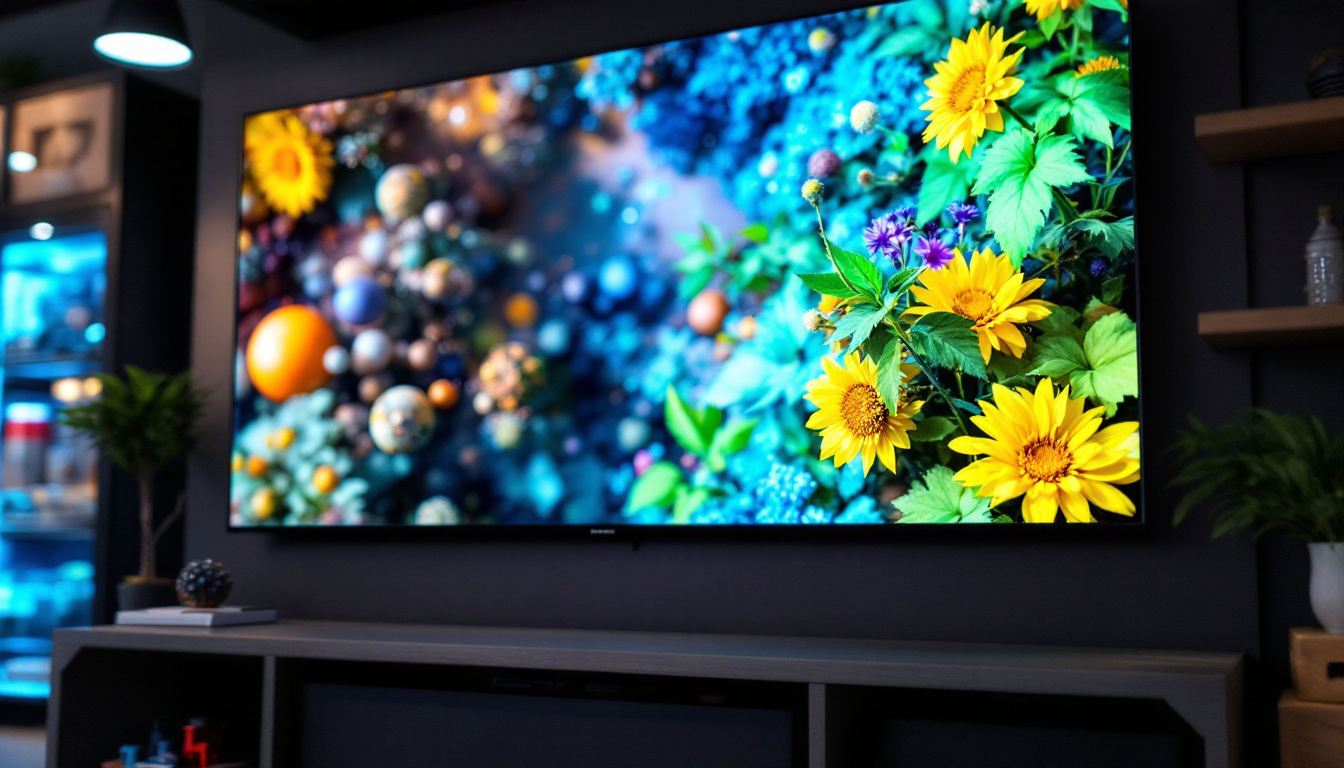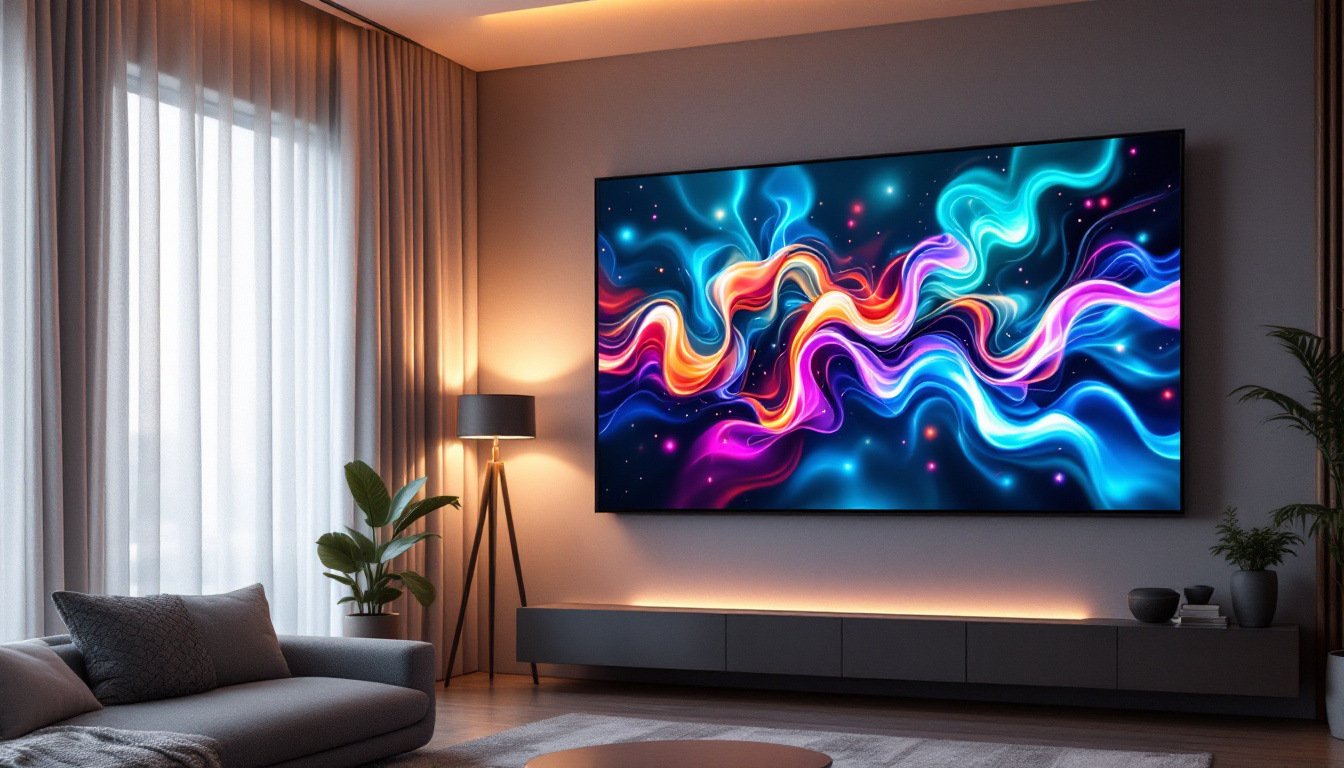In the rapidly evolving world of technology, the display monitor has become an essential component of both personal and professional environments. Among the various types of display technologies available, LED (Light Emitting Diode) displays have gained significant popularity due to their superior performance and energy efficiency. This article explores the intricacies of LED displays, their advantages, and how they compare to other display technologies.
Understanding LED Technology
LED technology is based on the use of semiconductor diodes that emit light when an electric current passes through them. Unlike traditional LCD (Liquid Crystal Display) monitors that rely on fluorescent backlighting, LED displays utilize these diodes to create images directly. This fundamental difference leads to several key advantages, including improved brightness, contrast, and energy efficiency. The compact nature of LEDs also allows for thinner screens, making them ideal for modern design aesthetics where space is at a premium.
How LED Displays Work
At the core of an LED display is a grid of tiny diodes that emit light in various colors. These diodes can be arranged in different configurations, such as RGB (Red, Green, Blue) or monochrome setups. When combined, these colors create a full spectrum of light, allowing for vibrant images and videos. The brightness of each pixel can be adjusted independently, leading to deeper blacks and brighter whites, which enhances the overall visual experience. Furthermore, the rapid response time of LEDs minimizes motion blur, making them particularly suitable for fast-paced video content, such as sports or action movies.
Types of LED Displays
LED displays can be categorized into several types, each designed for specific applications. The most common types include:
- Edge-lit LED: This type features LEDs placed along the edges of the screen, using a light guide to distribute the light evenly across the display. Edge-lit displays are often thinner and more energy-efficient.
- Direct-lit LED: In this configuration, LEDs are placed directly behind the screen, providing uniform brightness and better contrast. Direct-lit displays are commonly used in larger screens.
- OLED (Organic LED): A more advanced technology, OLED displays use organic compounds that emit light when electrified. This allows for even greater color accuracy and contrast, as each pixel can turn on or off independently.
In addition to these types, there are also specialized LED displays such as Mini-LED and Micro-LED technologies. Mini-LED displays utilize thousands of tiny LEDs to enhance local dimming capabilities, resulting in improved contrast and color performance. Meanwhile, Micro-LED technology represents a significant leap forward, as it uses microscopic LEDs to create self-emissive pixels, offering the potential for even higher resolutions and more vivid colors without the drawbacks of traditional backlighting methods. These innovations are paving the way for future advancements in display technology, promising even more immersive viewing experiences.
Advantages of LED Displays
LED displays offer numerous advantages over traditional display technologies, making them a preferred choice for many users. Here are some of the most notable benefits:
Energy Efficiency
One of the standout features of LED displays is their energy efficiency. Compared to older technologies, such as CRT (Cathode Ray Tube) and even LCD, LED displays consume significantly less power. This not only reduces electricity costs but also contributes to a smaller carbon footprint, making LED displays an environmentally friendly option. Furthermore, many LED displays incorporate advanced power management systems that adjust brightness levels based on ambient light conditions, further optimizing energy use. This ability to adapt not only enhances user experience but also extends the life of the display.
Improved Image Quality
LED displays are known for their superior image quality. The ability to produce deeper blacks and brighter whites enhances the overall contrast ratio, resulting in more vivid images. Additionally, the wide color gamut offered by LED technology allows for a more accurate representation of colors, making it ideal for graphic design, photography, and video editing. The high refresh rates of LED displays also contribute to smoother motion, which is particularly beneficial for gaming and fast-paced video content. This combination of clarity, color accuracy, and motion handling makes LED displays a favorite among professionals and enthusiasts alike.
Longer Lifespan
Another advantage of LED displays is their longevity. Typically, LED monitors can last up to 50,000 hours or more, significantly outpacing their LCD and CRT counterparts. This extended lifespan translates to less frequent replacements and lower long-term costs, making LED displays a wise investment. Moreover, advancements in LED technology continue to enhance durability, with many models now featuring improved resistance to environmental factors such as heat and humidity. This resilience not only ensures consistent performance over time but also makes LED displays suitable for a variety of settings, from home theaters to outdoor advertising installations.
Versatility in Applications
LED displays are incredibly versatile, finding applications across a wide range of industries. From large-scale outdoor billboards that capture the attention of passersby to sleek, modern screens in corporate environments, the adaptability of LED technology is unmatched. Additionally, the modular design of many LED displays allows for creative configurations, enabling unique installations that can fit any space or design requirement. This flexibility makes them an ideal choice for events, exhibitions, and retail environments, where dynamic content can be showcased to engage audiences effectively.
Enhanced Viewing Experience
In addition to their technical advantages, LED displays provide an enhanced viewing experience that is hard to replicate with other technologies. The wide viewing angles offered by many LED screens ensure that colors remain consistent and vibrant, regardless of the viewer’s position. This feature is particularly advantageous in collaborative environments, such as offices or classrooms, where multiple people need to view the screen simultaneously. Furthermore, many LED displays come equipped with features like anti-glare coatings and blue light filters, which help reduce eye strain during prolonged use, making them a healthier option for users who spend long hours in front of screens.
Comparing LED Displays with Other Technologies
While LED displays have many advantages, it is essential to compare them with other display technologies to understand their unique position in the market. The two primary competitors are LCD and OLED displays.
LED vs. LCD
LCD displays, which rely on fluorescent backlighting, have been the standard for many years. However, LED technology has largely replaced LCD due to its superior performance. LED displays offer better brightness, contrast, and energy efficiency, while also being thinner and lighter. Although LCD monitors can still be found in various applications, the trend is shifting towards LED technology.
LED vs. OLED
OLED displays are often considered the gold standard in display technology due to their exceptional color accuracy and contrast. However, they come with a higher price tag and can suffer from issues like burn-in, where static images can leave a permanent mark on the screen. LED displays, while not as advanced as OLED, offer a more affordable option without compromising significantly on quality. For most users, LED monitors provide an excellent balance between performance and cost.
Applications of LED Displays
LED displays are versatile and can be found in a wide range of applications. From consumer electronics to large-scale advertising, their adaptability makes them a popular choice across various industries.
Consumer Electronics
In the realm of consumer electronics, LED displays are ubiquitous. They are commonly used in televisions, computer monitors, and smartphones. The demand for high-definition content has driven manufacturers to adopt LED technology, resulting in sharper images and more immersive viewing experiences.
Commercial Use
In commercial settings, LED displays are often employed for advertising and information dissemination. digital signage, which utilizes LED technology, has become increasingly popular in retail environments, airports, and public spaces. The ability to change content quickly and easily allows businesses to engage customers and convey information effectively.
Industrial and Medical Applications
LED displays are also making strides in industrial and medical applications. In manufacturing, they are used for monitoring equipment and displaying critical information in real-time. In the medical field, LED displays are utilized in imaging devices and diagnostic equipment, where accurate color representation is crucial.
Choosing the Right LED Display
With a plethora of options available, selecting the right LED display can be a daunting task. Several factors should be considered to ensure the best choice for specific needs.
Screen Size and Resolution
Screen size and resolution are critical factors that influence the viewing experience. Larger screens with higher resolutions, such as 4K or even 8K, provide more detail and clarity, making them ideal for tasks that require precision, such as graphic design or video editing. Conversely, smaller screens may suffice for general use or casual gaming.
Refresh Rate and Response Time
For gaming and fast-paced video content, refresh rate and response time are essential specifications. A higher refresh rate (measured in Hz) results in smoother motion, while a lower response time minimizes motion blur. Gamers should prioritize displays with at least a 120Hz refresh rate and a response time of 5ms or lower for optimal performance.
Connectivity Options
Modern LED displays come equipped with various connectivity options, including HDMI, DisplayPort, USB-C, and VGA. Ensuring compatibility with existing devices is crucial for seamless integration. Additionally, features like built-in speakers and USB hubs can enhance the overall user experience.
Future of LED Display Technology
The future of LED display technology looks promising, with continuous advancements paving the way for even more innovative applications. Emerging trends include:
MicroLED Technology
MicroLED is an exciting development in display technology that utilizes microscopic LEDs to create individual pixels. This technology promises to deliver even better color accuracy, brightness, and energy efficiency than traditional LED displays. MicroLED displays are expected to revolutionize the market, particularly in high-end applications such as televisions and large-scale displays.
Flexible and Transparent Displays
Another area of growth is the development of flexible and transparent LED displays. These displays can be bent or shaped to fit various surfaces, opening new possibilities for design and functionality. Transparent displays, on the other hand, can be integrated into windows or other surfaces, allowing for augmented reality applications and innovative advertising solutions.
Smart Displays
As the Internet of Things (IoT) continues to expand, smart LED displays that integrate with other devices are becoming increasingly common. These displays can offer personalized content, respond to user interactions, and even adjust settings based on environmental factors. The future will likely see more interconnected displays that enhance user experience across various platforms.
Conclusion
LED displays have transformed the way we interact with technology, offering superior performance, energy efficiency, and versatility. As advancements continue to shape the landscape of display technology, LED displays remain at the forefront, catering to a diverse range of applications. Whether for personal use, commercial purposes, or specialized industries, understanding the benefits and features of LED displays is essential for making informed choices in an ever-evolving market.
Discover the Future of Visual Engagement with LumenMatrix
Ready to elevate your visual experience with the latest in LED display technology? LumenMatrix is at the forefront of innovation, offering a comprehensive range of LED display solutions tailored to your needs. From captivating Indoor LED Wall Displays to dynamic Outdoor LED Wall Displays, and from versatile Vehicle LED Displays to sleek LED Poster Displays, our products are designed to make your brand stand out. Embrace the future with our LED Sports Displays, interactive Floor LED Displays, and the revolutionary All-in-One LED Display. For a truly unique impact, explore our Custom LED Display and LED Transparent Display options. Join us in revolutionizing visual communication and create unforgettable experiences with LumenMatrix. Check out LumenMatrix LED Display Solutions today and see your message come to life with unparalleled clarity and vibrancy.

